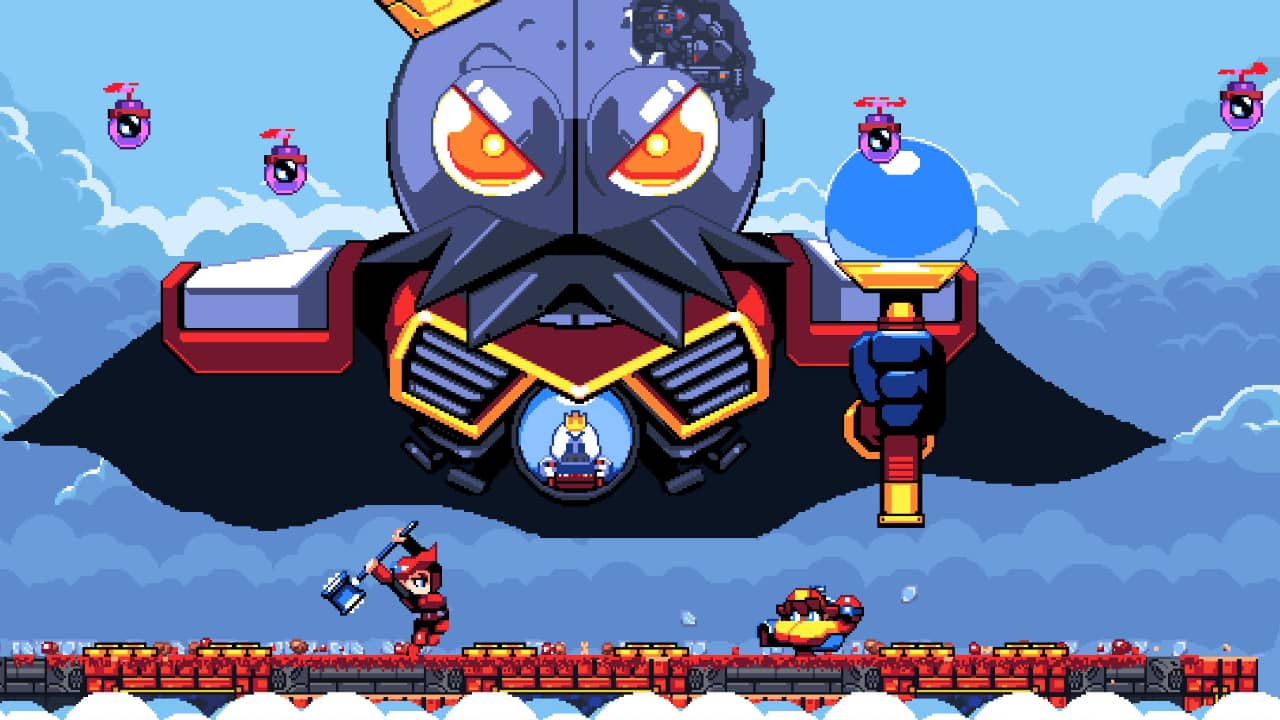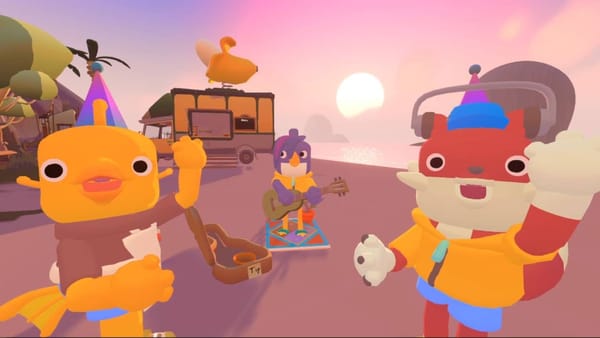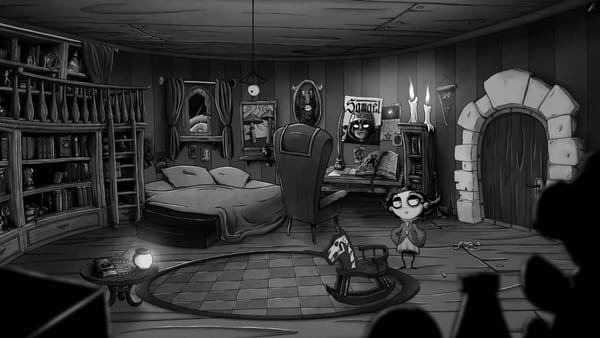An unexpected invite to a Chenso Club review was well-received. Sure, I’ll join your club, but as a player, not a follower. The latter’s for chumps. Oh, this is a title from Curve Games? Things are looking up.
Listed as a rogue-like, I’m going to go with a blander description of action-platformer. That’s not a slur on the game, but it didn’t feel like a rogue-like as it felt, well… fair. Yes, rogue-likes are mostly fair, but as Pixadome included a nice selection of difficulty levels, ‘there’s something for everyone’. Disclaimer: I played on an easier level to experience the story first.
Not that the story was worth it, it was a bit too hectic for me. The skinny in Chenso Club is this: you play Blue, a cyborg that serves the Earth’s defences, fighting against alien invaders, including a big-headed brain aline named Brian. Well, I think that Blue is a cyborg. Anyway, you’ll play through about five or so worlds, each with two phases (about six stages) and a nemesis at the end. Usually, when you defeat a nemesis, you unlock a new character.
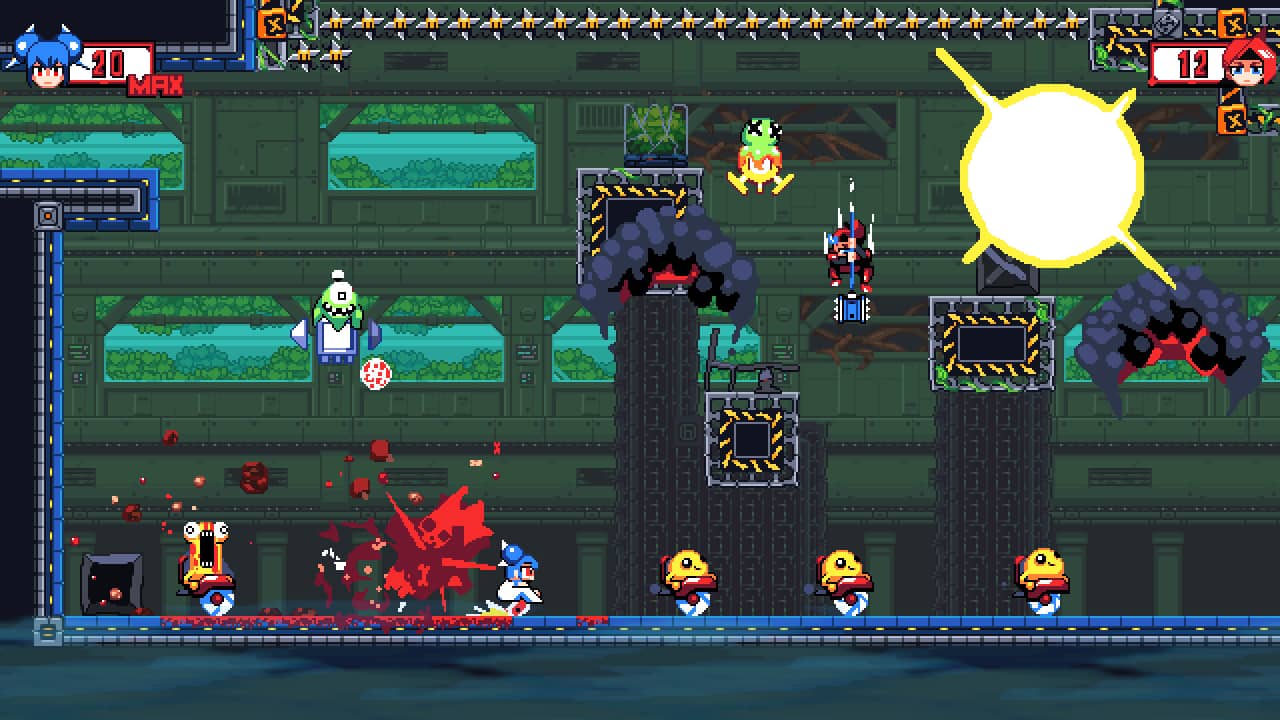
Chenso Club Review
All the characters in the game have their own style; all-rounder, strength, agility, magic, etc… but they have the same core skills of light attack, charged attack, specials and the dash. Emphasis has to be placed on the dash here as it’s not only essential to survival (there’s no block, so you’re invulnerable during a dash), but it allows you to jump up or down to the next stage and predominantly reach and attack the 80% of flying enemies. Dash is essential.
The controls in Chenso Club are pretty tight, but I found it better playing on the keyboard on my desktop rather than on the Steam Deck. Due to the practicality of the latter, I played most of it while in the lounge and in bed, and pressing the left joystick to dash and attacking with one of the triggers got a little monotonous. Movement is accurate, but because of the nature of jumping around a lot, there are inevitably areas where you’ll jump and fall off-screen as if playing Super Smash Bros. Some power-ups allow multiple dashes, but by default, you only get one at a time, and that takes some getting used to when mid-air.
You start the game with full health (duh), and that’s also your currency for buying upgrades. Each kill will award more, but you have to manage how much of a buffer you need to live and how much you’re willing to upgrade your skills. Powers include stat increases to attacks and health, floating helpers that attack enemies, specials that send shockwaves or pull enemies to a black hole, and much more. There’s no indication how many times you’ve upgraded, but as long as you have the money, you can keep buying upgrades and literally demolish the enemies.
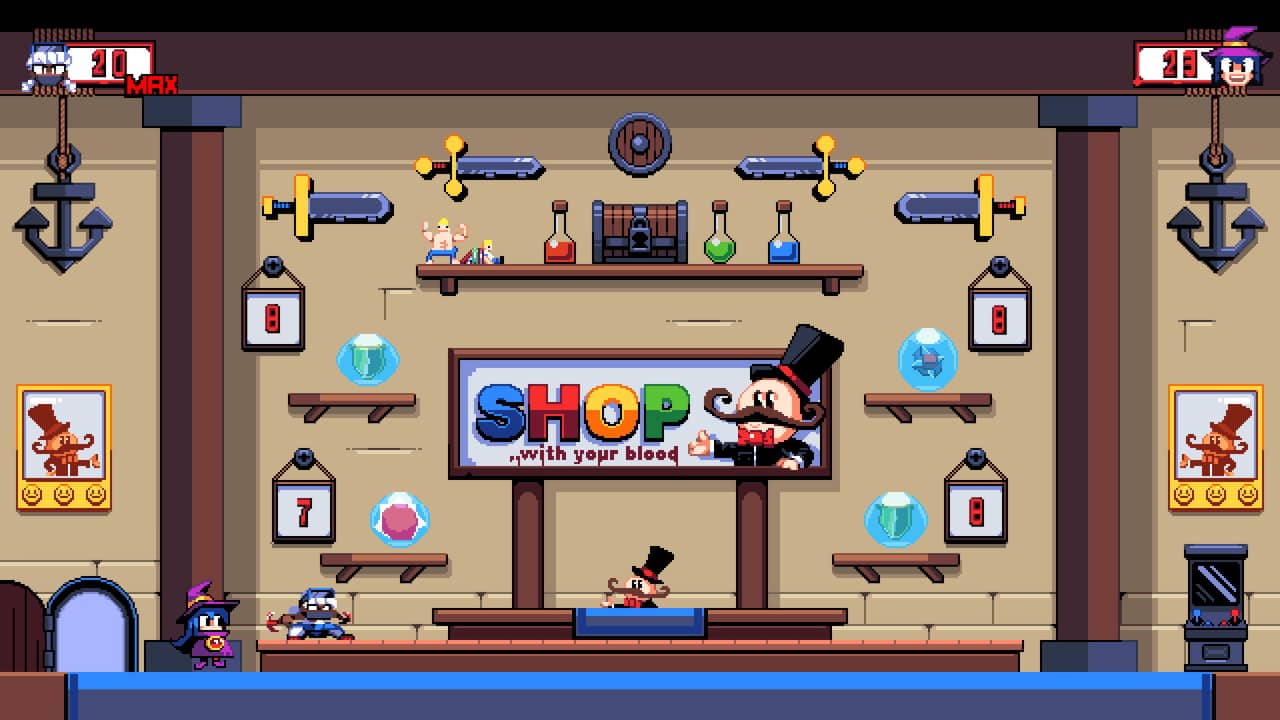
Bonus Features
Between some stages, there are also bonus areas. One area includes collecting blood vials (your health and currency) to unlock chests at the end, which are usually valuable. There’s another bonus area where you have to pose for photos to raise your followers. Yes, social media plays a part, as gaining more followers unlocks coins for further upgrades. Between worlds, you can unlock NPCs that give new powers or buffs. These aren’t paid for with blood but coins awarded from your follower count.
The story isn’t that long, and I felt a little dissatisfied when completing it. That said, Chenso Club isn’t about the story but the gameplay (as should be the case). The key here is that the longer you play and stay alive, the more rewarding it be. The only thing with staying the distance is enemies become stronger too. Effectively you’ll be doing the same levels again, only at a higher difficulty. If the style of play is what you’re looking for, you’ll be in your element, and if you’re an achievement hunter, you’ll want to complete the game with each character, too.
Chenso Club is an entertaining game, and I suppose it is a rogue-like, but slightly more rewarding than most as you can actually progress early on. While you can play Chenso Club in co-op, I solely played solo, so I couldn’t comment on that. Presumably, the enemies are even harder in that mode but more rewarding with a friend. On Steam Deck, it was flawless, as expected, but the controls feel better with the keyboard or a gamepad.
Available on Steam (reviewed), PlayStation, Xbox and the Nintendo Switch.


